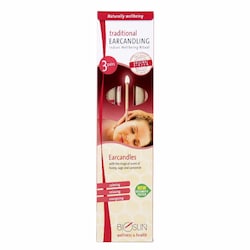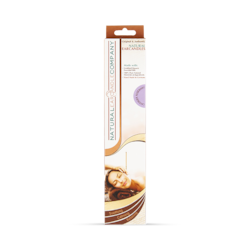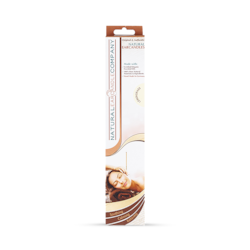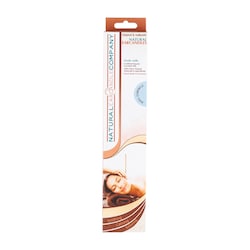20% off £30
Causes and risks of dark ear wax

How much thought have you ever given to ear wax? We are guessing not much, and we can’t blame you!
Ear wax is not the nicest thing to think about, but it is the product of another clever function of the body. And it is there for a reason.
It might not seem too pretty, but ear wax plays a key part in keeping your ear healthy.
So, take the time to have a look at it and see what it tells you.
The colour and consistency of the wax can demonstrate how healthy your ear is.
But a word of caution, your ear is a very delicate thing, so treat it gently.
What exactly is ear wax?
We are all familiar with ear wax, but how many of us actually know what it is or why it is there?
Ear wax is created from a waxy oil called cerumen, which is produced in the ear canal.1 The wax consists of fats, sweat and debris from inside the ear. Its generally yellow in colour.
The ear canal is the area between the fleshy outer ear and the middle ear.
Its purpose is to protect the ear from invasion by foreign particles such as dust and micro-organisms.
It also prevents water from irritating the skin inside the ear canal.
Wax then makes its way out of the ear canal and out of the opening to the ear naturally and is washed away.
Why is my ear wax dark?
You probably do not examine your ear wax too often, but you should.
Did you know that the colour of your ear wax can tell you a lot about your body?
Ear wax comes in a variety of colours, the most common of which is a wet, yellow-brown or a dry white-grey.
This can vary according to your health and even your ethnicity.
The colour of your ear wax can actually change, and if it starts to appear dark then there could be an important reason for this.
It is usually a sign that you are living or working in a dirty environment as the wax is trapping dirt.2
Darker ear wax is often also much older, as it has been trapping dirt in the ear for longer.
If the ear wax becomes black, then it could signify a more significant ear wax build up.
This is often as a result of a blockage, which might be caused by a build-up of ear wax, a foreign object being lodged in the ear, such as hearing aid or headphone debris, or compacted ear wax.
This may also be accompanied by some pain, discomfort or hearing loss.
It may also be a way to identify the fact that your ear does not naturally remove ear wax as well as it should.
If this is the case, you should ask your doctor to investigate and remove whatever might be causing the problem.
Dark ear wax can sometimes come with age, particularly in men. As you get older, you may produce less wax, but it takes on a thicker consistency which can lead to it building up quicker.
If you see ear wax that is tinged with blood, then this could be a sign of a scratch or injury to the ear.
Ear wax removal: how to safely remove ear wax
Generally, your ear wax should fall out on its own.
However, if it is not doing this then you might need to give it a helping hand.
Try to resist the urge to go digging around in there as this can damage the ear.
You should remember that cotton buds are not designed for ear cleaning, as they can actually push ear wax deeper into the ear canal and compact it.
Ear wax removal at home
Instead, the best way to remove ear wax is to try putting two or three drops of olive oil or almond oil into your ear twice a day.3
Repeat this over a few days and you should find things starting to clear.
If you are still having problems trying to clean wear wax out, visit your pharmacist for some more specialist advice and possible treatments such as ear wax drops, to help clear it.
A guide to earwax removal
For more information on managing an ear blockage due to a build-up of wax, you might like to browse this handy guide.
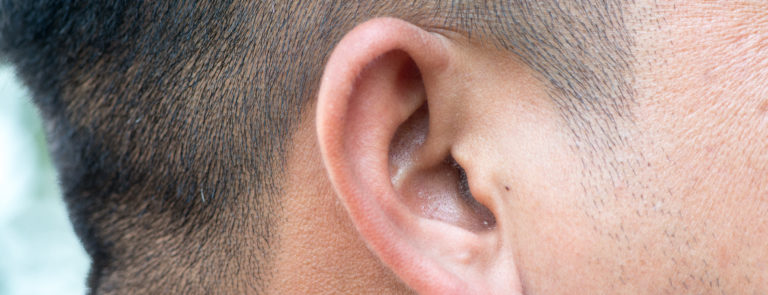

You should always be careful when doing anything with your ears. They are very sensitive and it is easy to injure them, so leave any in-depth investigations to the professionals.
Ear syringe and your GP
In the past, you could visit your GP and they would offer to syringe your ears, using a process of ear irrigation, as a solution to ear wax build up.
However, this is no longer standard practice although some surgeries may offer it privately.4
Last updated: 06 May 2021
- https://www.healthline.com/health/earwax-buildup
- https://www.health.qld.gov.au/news-events/news/ear-wax-cerumen-cotton-bud-ear-cleaning
- https://www.nhs.uk/conditions/earwax-build-up/
- https://www.nhs.uk/conditions/earwax-build-up/


